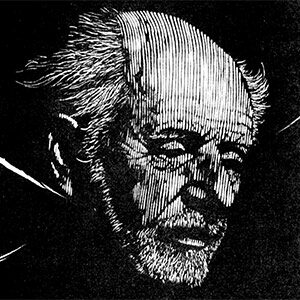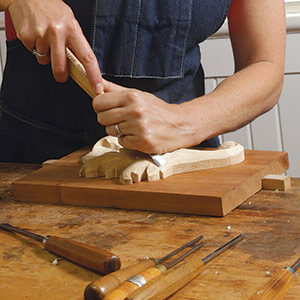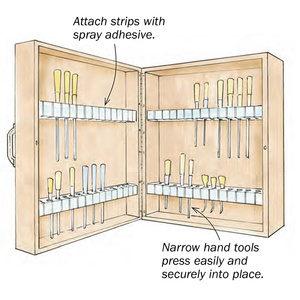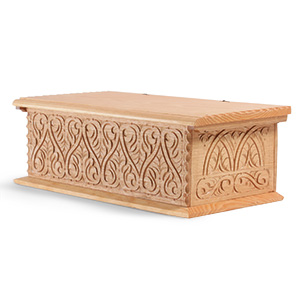The Basics of Classical Relief Carving
A first lesson from a second-generation woodcarver
Synopsis: Master carver Nora Hall teaches beginners how to carve, and she marvels at how quickly students develop skill at manipulating light and shadow to create realistic forms. She teaches the old European way of relief carving and talks about basic principles — the carving should appear lifelike and possess a sense of movement. You observe your subject carefully, and you use your imagination. In this article, she talks about basic tools necessary to get started, how to carve with the grain, carving flowers as a first lesson, and how to continue teaching yourself the art. Side information details how to bevel both sides of a carving tool’s edge.
Anyone can learn how to carve wood. All it takes is patience, seven or eight tools and a lot of practice. I work with hundreds of students from across the country each year, and I am continually fascinated by how quickly they master the skill. Furnituremakers are especially eager to learn because they know that carving gives them an important design tool: a way to manipulate light and shadow. That’s really what decorative carving is all about—controlling light and shadow to create realistic forms.
The method I teach to beginners is the old-European way of relief carving that I learned from my father in Holland. I began carving during World War II, when I was 18. The boys were hiding from the Germans, and since my father needed help in his carving studio, I went to work for him. I’m thankful about the way things worked out; otherwise, I might not have had the patience to master the traditional methods of carving motifs like flowers, leaves and scrolls.
Woodcarving can be as simple or as complex as you want, but in either case, the underlying principles are the same. First and foremost, your carving should appear lifelike and possess a sense of movement, whether you’re carving a single flower, as described below, or a full-size human torso. You must observe your subject carefully, and use your imagination to come up with ways to make things appear real.
Take an oak leaf, for example. Right off the tree it’s a pretty shape, but it becomes more attractive and complex as it drys, twists and wrinkles. The same idea applies to carving. You don’t want any perfectly flat or boring surfaces. Something carved exactly round will look unnatural. You never want any part of your work to appear heavy and wooden, so you may want to undercut the edges of some parts slightly, to create a dramatic shadow or a feeling of lightness. Avoiding that heavy feeling might even require you to distort the scale of an object; carving something larger or smaller than life may suggest life and movement more than an exact copy. Keep these basics in mind as you begin to sketch and shape your own carvings.
A basic tool kit for carvers
Your enthusiasm for woodcarving shouldn’t be dulled by fears that you can’t start without the hundreds of gouges and chisels pictured in catalogs. With my system, you’ll need only eight tools to outline and shape the convex and concave surfaces on any relief carving. I always stress that these are not beginners’ tools; they are starter tools, and you’ll use them as long as you carve.
From Fine Woodworking #90
For the full article, download the PDF below:
Fine Woodworking Recommended Products

Suizan Japanese Pull Saw

Stanley Powerlock 16-ft. tape measure

Olfa Knife






















Log in or create an account to post a comment.
Sign up Log in